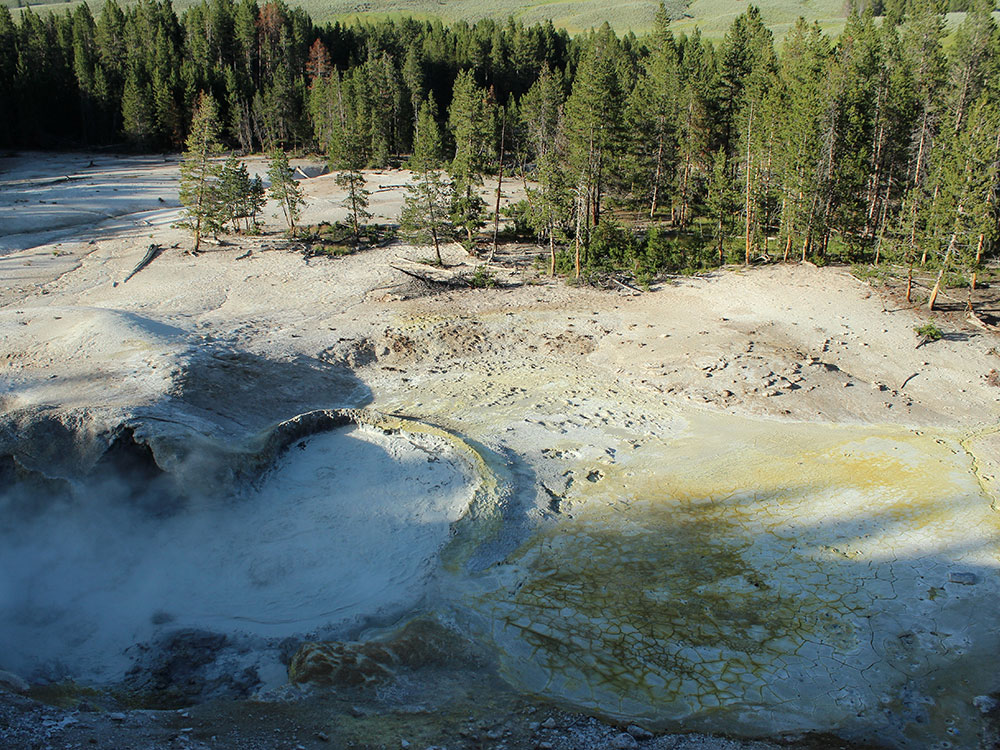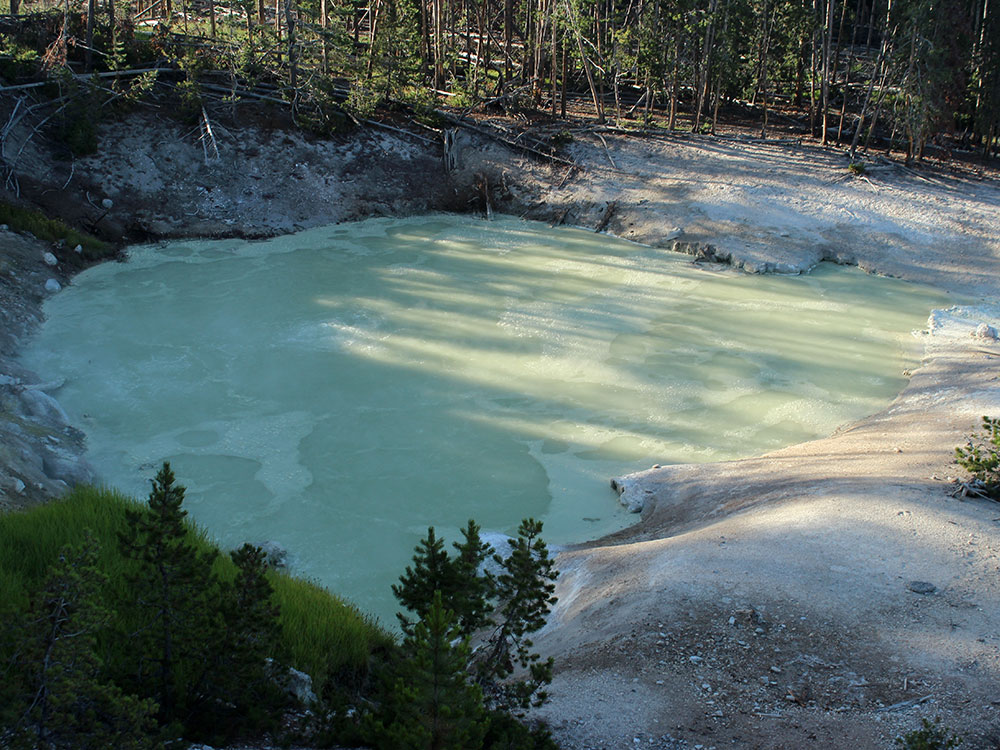General Information
The thermal features at Mud Volcano and Sulfur cauldron are primarily mud pots and fumaroles because the area is situated on a perched water system with little water available. Fumaroles or "steam vents" occur when the ground water boils away faster than it can be recharged. Also, the vapors are rich in sulfuric acid that leaches the rock, breaking it down into clay. Because no water washes away the acid or leached rock, it remains as sticky clay to form a mud pot. Hydrogen sulfide gas is present deep in the earth at Mud Volcano. As this gas combines with water and the sulfur is metabolized by cyanobacteria, a solution of sulfuric acid is formed that dissolves the surface soils to create pools and cones of clay and mud. Along with hydrogen sulfide, steam, carbon dioxide, and other gases explode through the layers of mud.
This article uses material from the Wikipedia article "Geothermal areas of Yellowstone", which is released under the Creative Commons Attribution-Share-Alike License 3.0

